11th, July 2019 | Donna
5 Facts About Blue Light Eye Damage

Light and colors play a huge role with how our eyes create our field of vision. Like blue light eye damage, some types of light can be harmful. Although, light plays a more productive role in our lives by helping us see things.
In fact, we can see things because of how our eyes absorb and reflect the light rays in our environment. Imagine turning off the lights inside a windowless room, you’d see nothing right?
That’s because your eyes can’t create vision without any light to work with.
If you lived in the old days, you wouldn’t have a lot of lights sources to choose from. Aside from sunlight and fire, our ancestors rarely encountered other forms of light.
Which means that unless they fancy staring directly at the sun, their eyes were less prone to harmful types of light rays. However, these days, our technological advancements are exposing us to more complex lights, some of which can be harmful to our vision.
Some of the more common light sources these days are television screens, light bulbs, computer screens, and cellphones.
With all the different types of light we have today, it’s important for you to know more about blue light eye damage.
What is Blue Light?
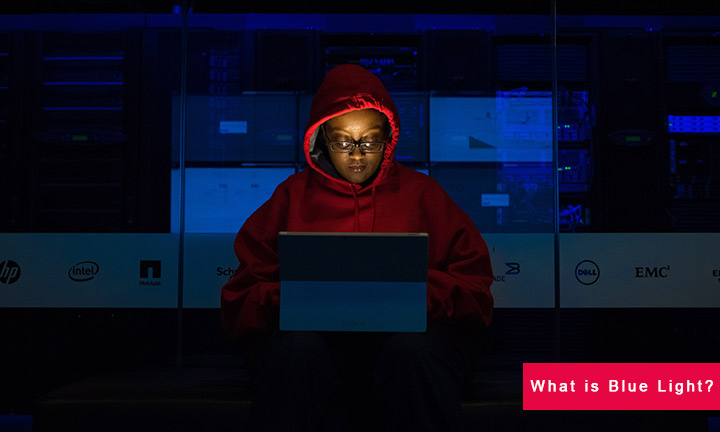
With all the fuss about skin care, you probably already know about harmful ultraviolet (UV) rays that can burn your skin.
There are visible and invisible types of light around us and UV rays are an example of light that your eyes can’t perceive.
Blue light, however, is a visible light that falls very close to the edge of the invisible-light spectrum.
The light from our sun is made up of different colors, such as orange, green, red, yellow, abd blue light rays.
These colors also have different types of shades according to the wavelength of the light ray, which is called electromagnetic radiation.
When you combine all of the different types of light rays, you get end up with white light, which is more commonly known as sunlight.
Light rays, wavelengths, and physics in general, can be very confusing to most of us. So let’s keep this discussion as simple as possible.
Light rays have varying wavelengths that give off different amounts of energy.
For example, there is less when light rays have longer wavelengths. While light rays with shorter wavelengths pack more amounts of energy.
Blue Light in the Spectrum of Light
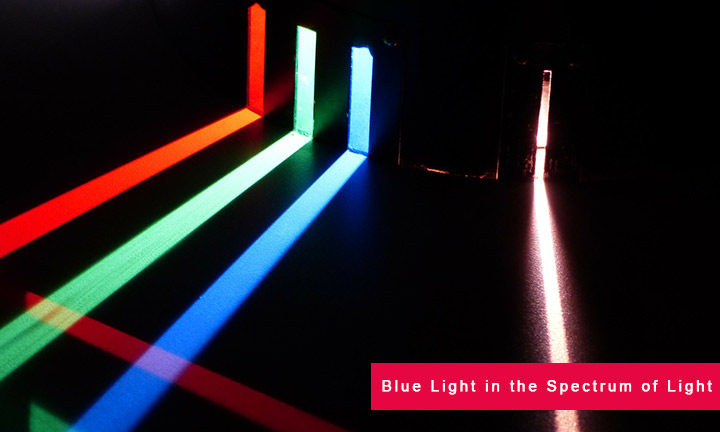
In the spectrum of light, blue light rays are visible light that fall just above the spectrum of invisible light rays.
When you look at diagrams of the spectrum of light, you’ll see that light rays that fall in the red side of the spectrum have long wavelengths. Which means that they have less energy.
While the rays on the bluer end of the light spectrum have more energy because they have shorter wavelengths.
You have visible and invisible light rays, and blue light rays with short wavelengths fall under the less visible type of light.
And below the visible blue spectrum of light are what we call ultraviolet (UV) rays that are invisible.
So, blue light rays are visible rays that have more energy. Which means that these shorter wavelengths pack lots of energy that can lead to blue light eye damage.
1. You can find blue light everywhere
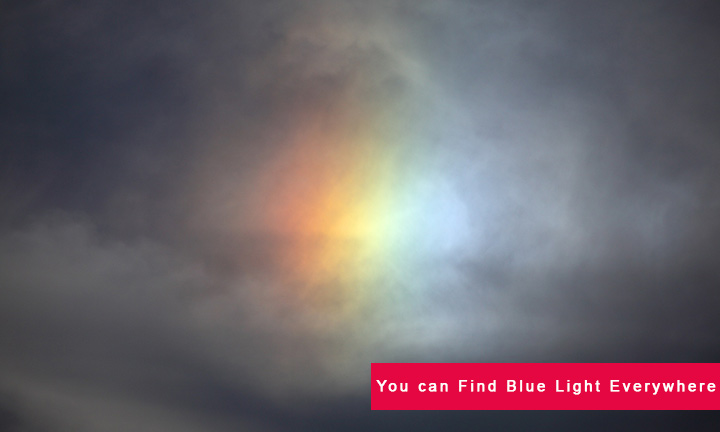
Blue light is not that difficult to find since most of it is from the sun. Sunlight contains a lot of blue light so you are exposed to blue light whenever you go out during the day.
But with our current technology, you can now find blue light even when the sun is down.
A few common sources of artificial blue light are fluorescent bulbs and LED lights that we have in our houses.
Read this article: How Digital Devices Are the Number One Reason for Eye Strain.
Today, the most significant sources of blue light are from the screens of digital devices like smartphones, computers, and other gadgets.
In fact, according to a study by the Environmental Protection Agency (EPA), most Americans spend 93 percent of their time indoors.
Which means that we could be getting more blue light exposure from our modern screens, lights, and gadgets.
Although our devices don’t emit as much blue light compared to the sun, the accumulated time and the intensity of our contact with these devices are making doctors worry about blue light eye damage.
2. Your eyes aren’t well designed to deter blue light
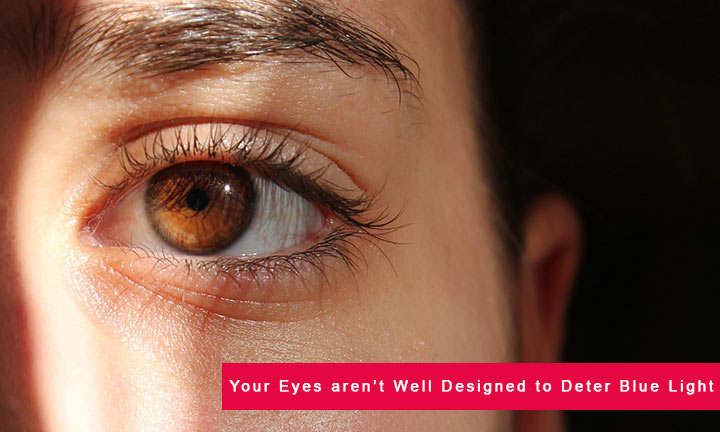
You’d be surprised to know that your eyes are very good at blocking invisible UV rays.
Your cornea and the lens of your eyes are designed so well that they can effectively block the UV rays from entering your sensitive retina.
As a matter of fact, even without protective eyewear, only less than one percent of harmful UV light can reach your retina.
However, sunglasses are effective tools to block UV light that can lead to eye damage.
On the other side of the spectrum, blue light eye damage is very probable because your eyes can’t protect themselves against it.
Yes, basically all types of visible blue light can easily reach your retina.
3. Exposure to blue light can raise the possibility of macular degeneration
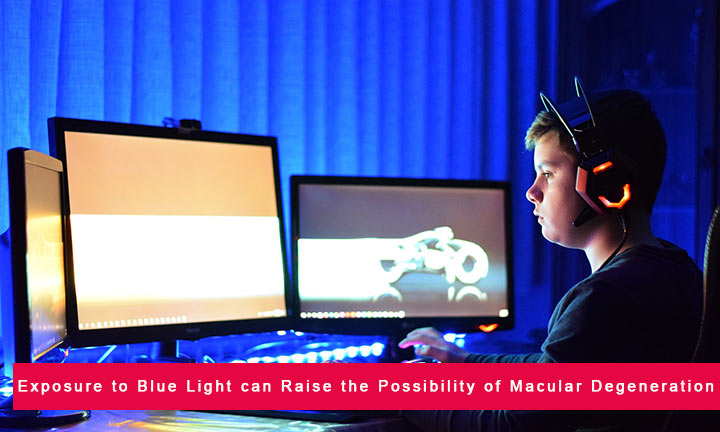
As mentioned above, blue light eye damage can occur because our eyes can’t naturally block it’s blue light rays.
Aside from the sunlight, the amount of time we spend on our screens and devices add up to a longer exposure time of blue light rays.
And this should really be alarming for medical professionals and everyone in general.
Read this article: 5 Foods To Prevent Macular Degeneration.
According to a study by the University of Alcala, long and severe exposure to cold light source or blue light can lead to retinal photodamage.
Additionally, we can greatly reduce the loss of retinal photosensitive cells if we use blue-blocking filters.
As a result, heavy exposure to blue light, without any filtering devices, can lead to eye damage and vision loss that are similar to macular degeneration.
Although, more research is still being conducted on the specific relations of blue light and macular degeneration.
4. Digital screens are related to blue light eye damage
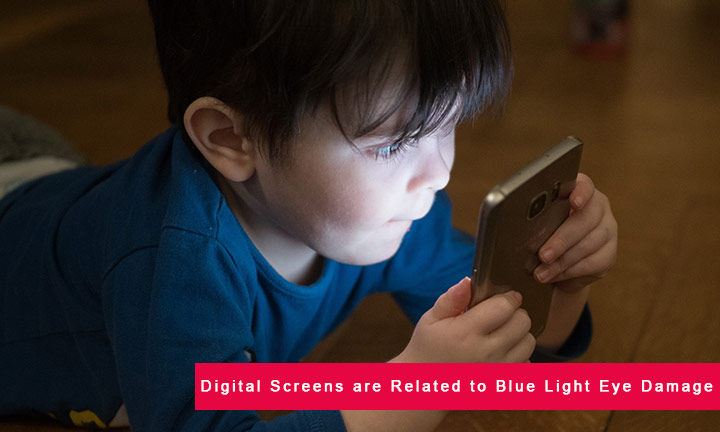
Blue light has a short wavelength that makes it spread more easily compared to other visible light.
The unfocused blue light from your digital screens can lessen contrast and increase eye strain that can lead to blue light eye damage.
According to a study by the Morehouse School of Medicine, we should consider getting LEDS that have emission peaks over 450 nm.
Because long term exposure with emission peaks that are lower than the 450 nm can lead to eye complications.
So you should start checking the emission peaks of your devices to avoid the possibility of blue light eye damage.
5. Blue light isn’t all bad
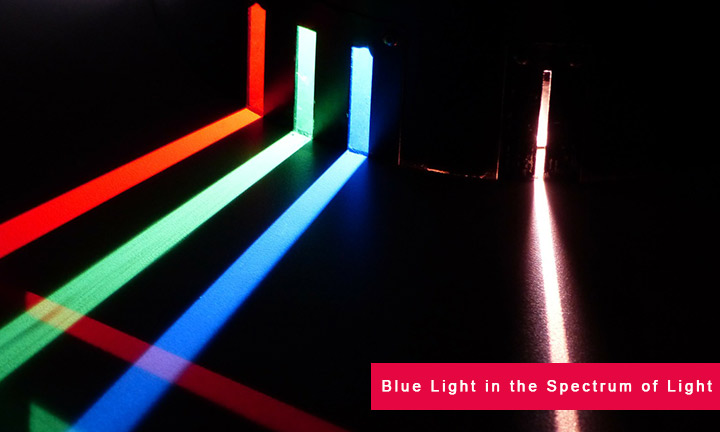
Blue light eye damage is only one side of the coin. In fact, as bad as blue light might seem, it’s not all bad for you.
A study by the Morehouse School of Medicine focuses on the important relationship between blue light and your circadian rhythm —which is your body’s wake and sleep cycle.
So blue light does play a healthy role in your daily life, as long as you stick to good eye care habits and avoid blue light at night.
Read this article: Good Habits to Preserve Your Eyesight Over Time.
To put it simply, getting the right amount of blue light during the day helps you maintain a healthy sleep cycle.
Additionally, blue light also keeps your mind active and alert. However, blue light is not as healthy at night.
Which means that getting high amounts of blue light at night can keep you awake and disrupt your sleep cycle.
Conclusion
Now that you know more about blue light and blue light eye damage, let’s talk more about preventive measures.
As mentioned above, getting healthy amounts of blue light during the day can help you stay active and maintain a healthy sleeping cycle.
However, there are times when it gets too hot and bright outside, and that’s when you need to wear protective eyewear like sunglasses.
When you stay indoors or during night time, the potential for blue light eye damage mainly comes from the screens of our devices.
So when you spend hours in front of your computer screen, you can use applications that act as blue light filters. This will help minimize the eye strain and blue light eye damage that your screens can cause.
You can also find blue light filters for your smartphones so you won’t have to worry about using your phones at night.
Additionally, there are also eyeglasses that have lenses that help protect you against blue light eye damage.
Keep it simple
As a final point, these best solution to avoid blue light eye damage is to simply follow good night habits such as minimizing the use of devices and screens that emit blue light.
It’s also good to keep a dim light later at night to relax your eyes and help your body get ready for sleep.
Remember, good habits help prevent health problems and blue light eye damage.
References:
The National Human Activity Pattern Survey (NHAPS): a resource for assessing exposure to environmental pollutants
https://www.nature.com/articles/7500165
Removal of the blue component of light significantly decreases retinal damage after high intensity exposure
https://www.ncbi.nlm.nih.gov/pmc/articles/PMC5854379
Effects of blue light on the circadian system and eye physiology

Leave a Reply
You must be logged in to post a comment.